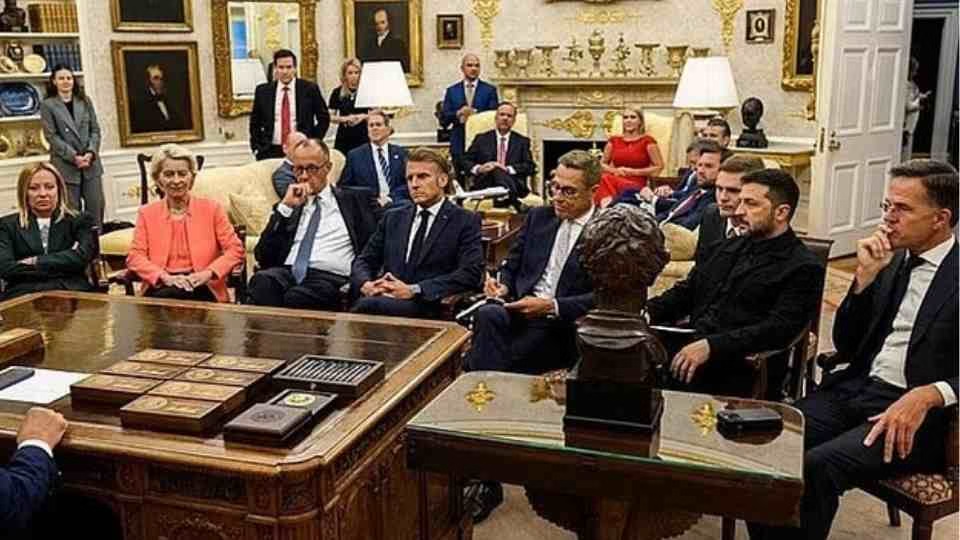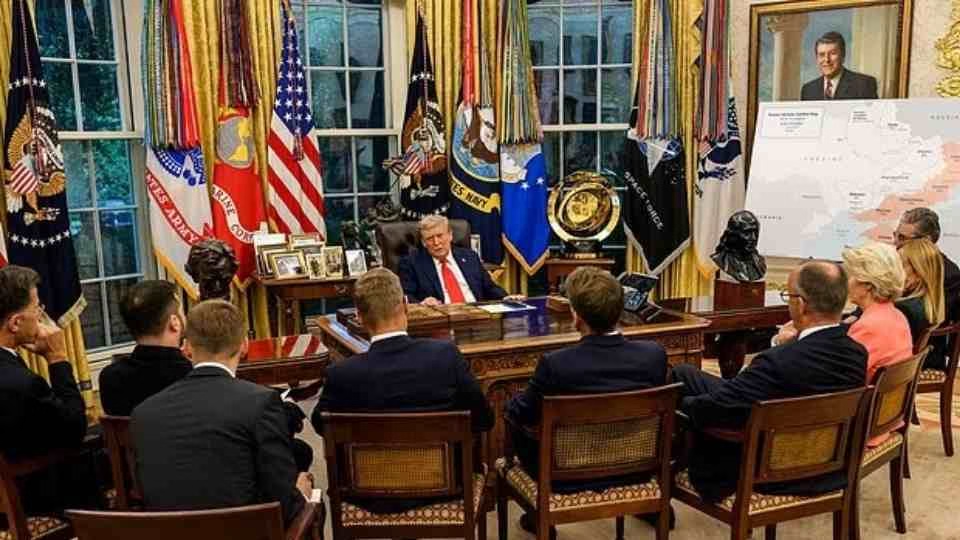A striking photograph from Monday’s Ukraine peace talks has captured international attention, showing European leaders assembled around President Trump’s desk in the Oval Office. The image features key figures including British Prime Minister Keir Starmer, French President Emmanuel Macron, German Chancellor Friedrich Merz, Italian Prime Minister Giorgia Meloni, and Finnish President Alexander Stubb positioned around the iconic Resolute Desk.
The gathering also included European Commission President Ursula von der Leyen, NATO Secretary-General Mark Rutte, and Ukrainian President Volodymyr Zelensky, with White House staff observing from the background.

Purpose of the Summit
The European delegation traveled to Washington with a clear mission: to advocate for Ukraine and encourage Trump to support concrete security guarantees for Kyiv in any potential peace agreement with Russia. This represents a crucial moment in international diplomacy as world leaders seek to address the ongoing conflict.
The meeting marked Zelensky’s return to the Oval Office since a difficult February summit where he faced challenging questions from Vice President JD Vance regarding Ukraine’s appreciation for American support. This time, the Ukrainian leader made a point of expressing gratitude multiple times and handled media interactions with notable diplomatic skill.
International Reactions
The photograph has sparked widespread discussion about global power dynamics. Social media commentators have offered varying interpretations, with some viewing it as evidence of American leadership on the world stage, while others have questioned the optics of European leaders appearing to defer to Trump.
Swedish peace and conflict research professor Ashok Swain observed the arrangement critically, questioning whether this representation aligns with European self-perception on the global stage.
Security Guarantee Proposals
A significant development emerged from Italian Prime Minister Giorgia Meloni’s proposal for non-combatant nations to provide Ukraine with security assurances similar to NATO’s collective defense clause, even if full NATO membership remains off the table. The Trump administration has shown interest in this concept, though it has ruled out deploying American ground forces as part of any peacekeeping mission.

Diplomatic Context
Secretary of State Marco Rubio emphasized that European leaders were invited as allies and partners, not as secondary players in the diplomatic process. This distinction appears important as the administration works to balance various international relationships while pursuing peace negotiations.
Ongoing Challenges
Despite the high-level meetings, significant obstacles remain in achieving a lasting settlement. Ukraine continues to demand Western-backed security guarantees to prevent future Russian aggression, while a coalition of 30 nations, including European countries, Japan, and Australia, has committed to supporting peacekeeping initiatives.
Trump has announced plans for a trilateral meeting involving himself, Zelensky, and Russian President Vladimir Putin, though Moscow’s response has been measured. Discussions have also addressed a substantial $90 billion weapons package for Ukraine.
Historical Perspective
The current photo has drawn comparisons to a 2018 image showing then-German Chancellor Merkel and other leaders standing over a seated Trump, highlighting the evolving nature of international diplomatic relationships and power structures.
As negotiations continue, the international community watches closely to see whether these diplomatic efforts can produce meaningful progress toward ending the conflict that has persisted for over three years since Russia’s invasion of Ukraine.






